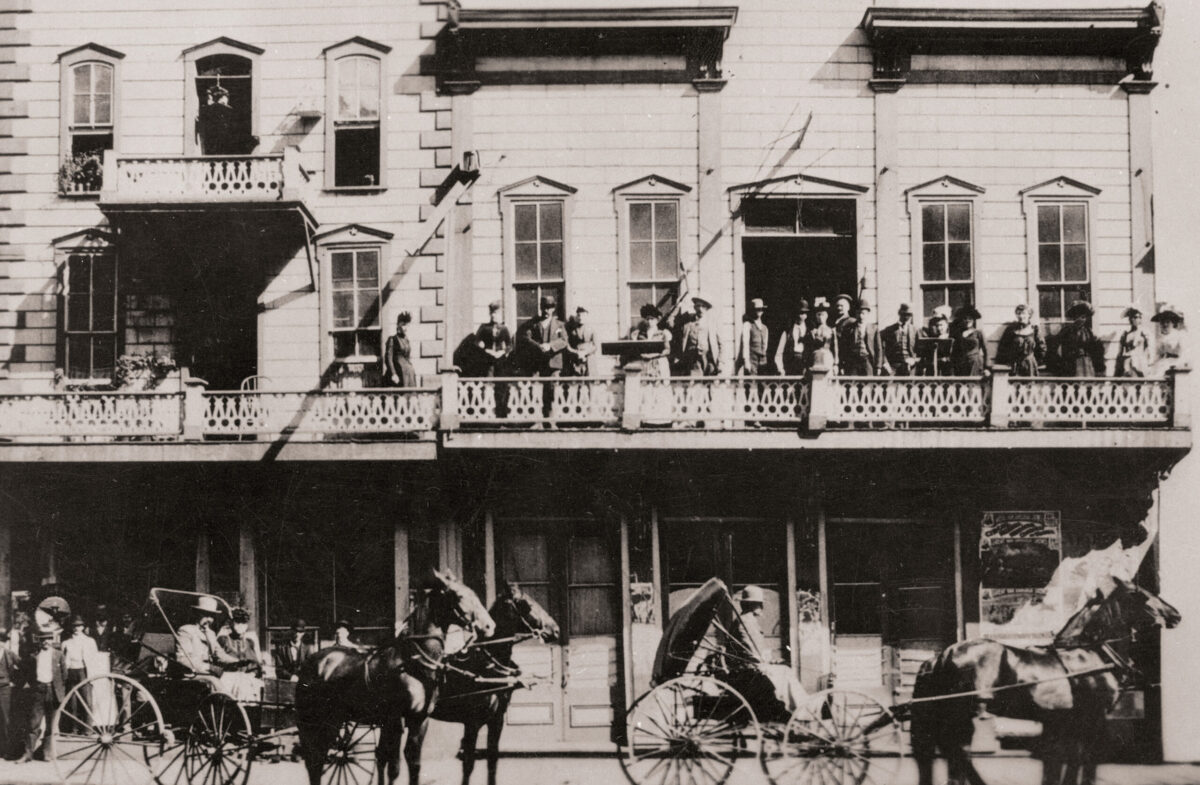Mention Deadwood and what often pops to mind are sordid scenes straight out of the namesake HBO television series—and to be fair, such scenes aren’t far from the truth. In 1874, on the mere rumor of gold in the Black Hills, prospectors came to the region in droves. Then, in the fall of 1875, such seekers did turn up an especially rich gold deposit in the northern Black Hills. That sparked the stampede to what became known as Deadwood Gulch, as miners staked claims and set up camp in a ravine choked with dead trees.
As happened in many mining camps, Deadwood soon had its share of gambling halls and bordellos. When trail guides “Colorado Charlie” Utter and brother Steve arrived with the first wagonload of prostitutes on July 12, 1876, the sporting women soon had more customers than they could handle. From then on a regular stream of wagons brought prostitutes to town.
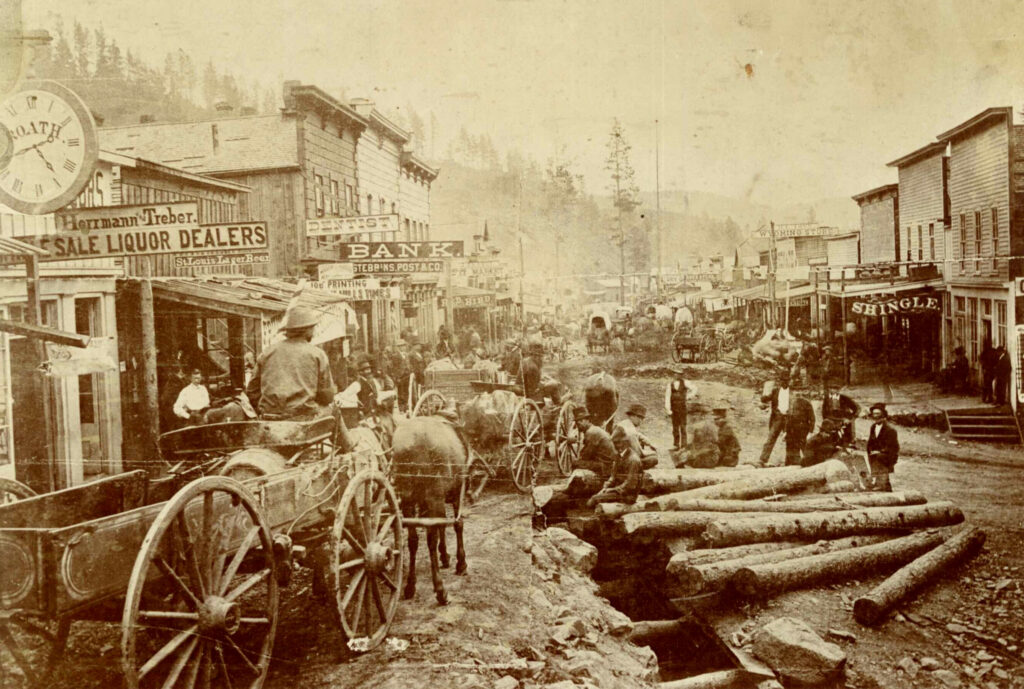
Receiving scant regard or care from either their employers or clientele, such women were often subject to abuse. On one headline-grabbing occasion, when a customer started to beat her bloody, a Gem saloon prostitute known as Tricksie (yes, Deadwood fans, there really was a working girl named Tricksie) shot the man through the head. According to Deadwood pioneer and memoirist John S. McClintock, the attending doctor threaded a probe all the way through the shooting victim’s skull. McClintock dubiously claimed to have run into the man on the street some weeks later, though the memoirist didn’t share (or perhaps didn’t know) Trixie’s fate. Such was the miserable welcome prostitutes could expect.
Looking the Other Way
Residents of early Deadwood desperately needed law and order. They got the right man in the spring of 1877 when Dakota Territory Governor John L. Pennington appointed hardware store owner and former Montana lawman Seth Bullock sheriff of Lawrence County. No longer was violent crime tolerated. However, prostitution continued to get a conspicuous pass. After all, it represented a thriving industry in a mining camp where men dominated the population and nine out of 10 women were painted ladies. Thus the brothels of Deadwood became an open secret. The swath of dance halls, gambling dens, saloons and brothels along both sides of lower Main Street, on the north end of town, became known as the “Badlands.” In the typical business arrangement, saloons and variety theaters occupied the first floors, while brothels operated upstairs. By the turn of the century the Badlands occupied an entire block of two-story buildings on the west side of Main.
The district’s prostitutes did not have an easy go of it. Among the worst abusers was Al Swearingen, proprietor of the Gem, who opened his saloon/theater/brothel soon after arriving in the spring of 1876. The women who worked for Swearingen were justly afraid of him, as he was notoriously cruel and domineering. Lured to the Gem on the false promise of respectable employment, unsuspecting women found themselves stranded with no money. Those with no other option were virtually sucked into the life of prostitution.
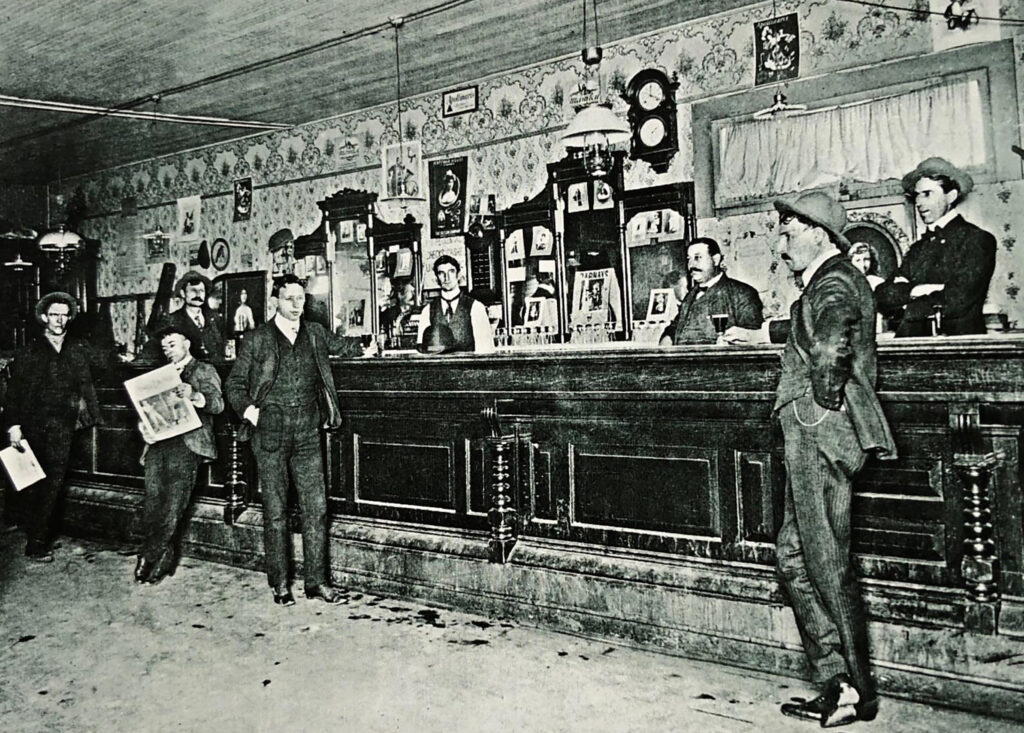
In the face of violence and degradation, many prostitutes turned to drugs and alcohol, which only deepened their despair. To address their pain and control depression, doctors often prescribed such habit-forming drugs as opium, laudanum and morphine, unintentionally sending the women on a further downward spiral into addiction. In other instances employers drugged their working women to better control them. Suicide attempts became so commonplace among prostitutes in the Badlands that Dr. Frank S. Howe, early Deadwood’s only physician, carried a stomach pump with him on calls to the red-light district.
A Booming Business
By the mid-1880s the boomtown counted more than a hundred brothels. Among the most popular, aside from the Gem, were Fern’s Place, The Cozy Rooms, the 400, the Beige Door, the Three Nickels and the Shasta Rooms. The madams of these notorious establishments included such standouts as May Brown, Eleanora Dumont, Dora DuFran, Belle Haskell, Mollie Johnson and “Poker Alice” Ivers.
DuFran (born Amy Helen Dorothea Bolshaw in England in 1868) was perhaps the best known and certainly the most successful. Dora and her husband, a gambler she met on arrival, operated a string of brothels across the region, from the Dakota boomtowns of Deadwood, Rapid City and Lead to Belle Fourche and Miles City, Mont. Rumor has it DuFran even coined the term “cathouse” for a brothel. Early on she befriended Calamity Jane (Martha Jane Canary), and the pair grew quite close. On occasion Jane worked for Dora, though the former’s refusal to bathe and habit of wearing men’s clothes served to limit her appeal to both customers and the madam herself, who insisted the girls who worked for her practice good hygiene and dress. When a middle-aged Calamity reconnected with DuFran in 1903, Dora hired Jane as a cook and laundress for her Belle Fouche brothel, Diddlin’ Dora’s. By then Calamity was suffering from the effects of alcoholism and a hard life, and Dora cared for Jane up till her death that summer. In 1932 DuFran, writing under the pseudonym d’Dee, published a 12-page biography titled Low Down on Calamity Jane. Of her late friend Dora wrote:
“It’s easy for a woman to be good who has been brought up with every protection from the evils of the world and with good associates. Martha wasn’t that lucky. She was a product of the wild and woolly west. She knew better than anyone where she made her mistakes, and she didn’t rate her virtues as highly as her friends did.”
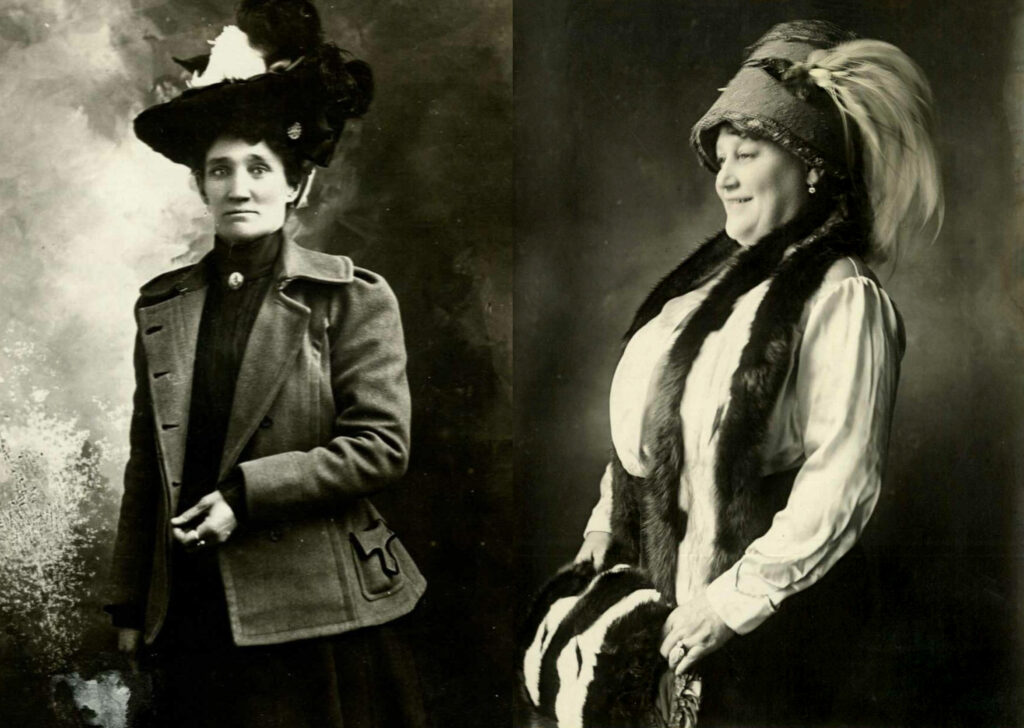
“Queen of the Blondes”
Another madam with a reputation for charity was Mollie Johnson. Scarcely 23 and already a widow when she arrived in Deadwood, Johnson remarried poorly and was deserted by her second husband before setting up a brothel on Sherman Street in 1878. While there were plenty of prostitutes in town from which to choose, Mollie was partial to hiring those with flaxen hair and became known as the “Queen of the Blondes.” Her establishment soared in popularity, rivaled only by the low-down Swearingen’s Gem.
Like the Gem, Mollie’s joint also provided entertainment. Unlike Swearingen, however, Johnson fancied her bordello as a high-end place and pulled out all the stops. All her girls were talented singers, dancers and balladists. Mollie herself also performed, as a shadow dancer. Wearing very little clothing, she would gyrate behind a screen on which her shadow was projected by a bright light. By all accounts, she brought down the house.
Mollie’s place proved so popular that even respectable society took note. In an 1879 dispatch headlined Sweet Sounds From a Bitter Source, a reporter for the local Black Hills Daily Times warned readers of its temptations:
“At the dead of night, when all nature is hushed in sleep, this reporter is frequently regaled, while on his way home, by the gentle cadence of sweet songs which floats out upon the stillness of the gulch like the silvery horns of elfland faintly blowing. Vocal music, wherever heard or by whatever thing or being produced, is entrancing to this sinner; hence the aforesaid sounds are sure to arrest his step at the corner and compel him to lend his ear to the mellifluent melody which steals out from Molly Johnson’s harem. But he doesn’t draw any nearer, for he knows that Where the Sirens dwell you linger in ease / That their songs are death, but makes destruction please; and he travels on, disgusted with himself because his virtuous life possesses such a skeleton element of fun, yet wonders that such a voluptuous harmony is tolerated by the divine muse of song to issue from such a b-a-d place.”
Reputation aside, its owner set out to prove that good can take root even in such a bad place. The proverbial “hooker with a heart of gold,” Johnson cared for her girls as if they were family. A case example dates from the summer of 1879 when one of Mollie’s favorite girls, Jennie Phillips, fell desperately ill. Author Chris Enss relates the story in her 2023 book An Open Secret. That July 6 Phillips and other girls from the bordello were on a buggy ride in the country when they encountered a tollgate whose owner had chained a feral cat to a tree. When Jennie picked up and tried to soothe the animal, it bit her on the lip, and within days she was bedridden. Though Mollie tended her daily, the young woman died some weeks later.
Beside herself in grief, Mollie had Jennie’s body laid out in a coffin and placed in the parlor of the brothel while she made funeral arrangements.
Then the unthinkable happened: A blaze swept through town, quickly engulfing Mollie’s house of ill repute. Yet the madam refused to evacuate until Jennie’s coffin had been safely removed. The next morning Mollie had Jennie interred in Deadwood’s Mount Moriah Cemetery. By Christmas a new $7,000 brothel had risen from the ashes of the old brothel, and Mollie had donated money to churches to buy presents for needy children.
One Happy Ending… and Many Sad Ones
Most soiled doves dreamed of a better life. Annie Hizer, one of Mollie’s girls, managed to realize her dreams. Known to her clientele as “Little Buttercup,” Annie had a regular customer in Black Hills physician Dr. Charles W. Meyer, and before long the two fell in love and were married. Held at the local opera house on March 7, 1880, their ceremony was a town affair, with city officials and military personnel in attendance. Mollie and her girls served as maids of honor.
But Little Buttercup’s happy ending was the exception rather than the rule. Take, for example, the sad fate of Nellie Stanley, a 23-year-old working girl at Belle Haskell’s brothel, the 400. A polite young Chicagoan with a typically hard backstory, she was somewhat of a loner. On the evening of March 19, 1894, complaining of a headache and sore throat, Nellie retired to her room, where she took an overdose of the painkiller Antikamnia. When fellow working girls found her unconscious, Belle summoned a doctor to the 400, but nothing could be done. Nellie was dead. Those who knew her best were certain she’d committed suicide. Sadly, such was a common occurrence in brothels.
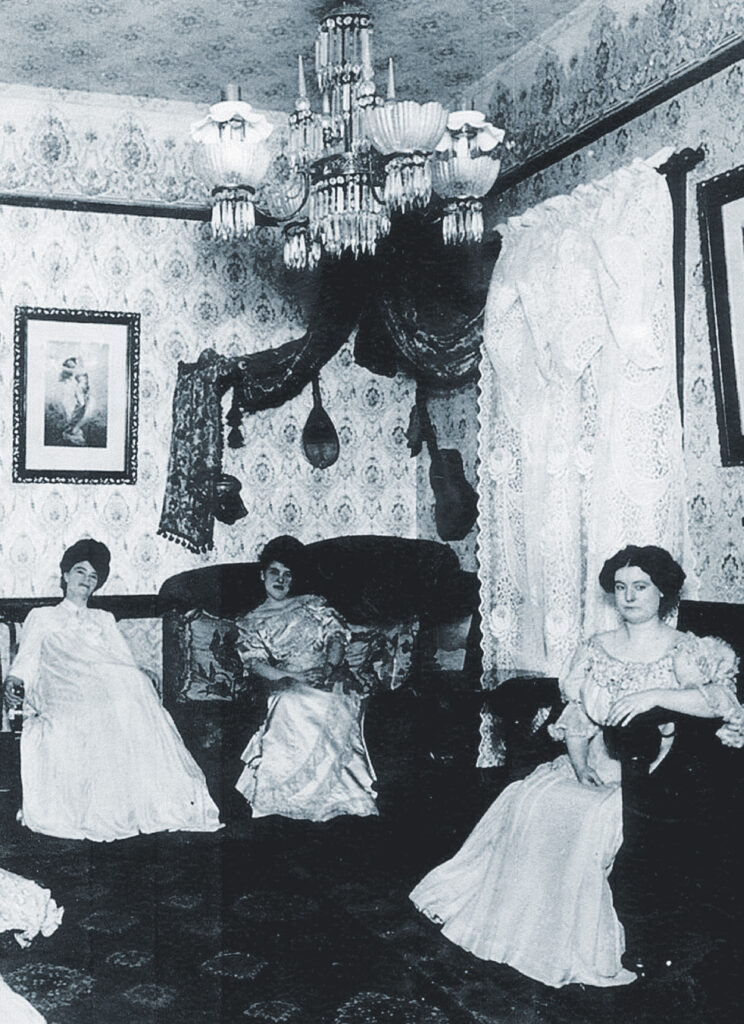
Like other houses of ill repute, Belle Haskell’s 400 was the genesis of other tragedies. When one 1893 love triangle ended in murder, however, even the seasoned madam was shocked. The trouble arose after one of Belle’s girls, 16-year-old Austie Trevyr (born Mary Yusta to a wealthy family in Lincoln, Neb.) took up with gambler Frank DeBelloy, the longtime lover of Gem saloon girl Maggie McDermott. For his part, DeBelloy was content to play both hands.
That December 17 Austie scrawled out a seemingly innocent invitation to Maggie to join her and Frank for drinks at the local Mascotte saloon. There, in a drunken fit of jealousy, Austie shot and killed Maggie. She was immediately arrested for premeditated murder. At trial the following spring a jury convicted Austie of manslaughter, the judge sentencing her to three years and seven months in the state penitentiary at Sioux Falls, S.D. In 1897 local news reports had the recently sprung Austie first returning to the 400 before leaving that summer for a women’s seminary back East, seemingly a reformed soiled dove.
An Enduring Institution
By 1889 legislators and lawmen across the Dakotas were targeting brothels and gambling dens and the activities that supported them. The South Dakota Legislature struck the first blow that year by outlawing the sale of alcohol, a move anticipating federal Prohibition by three decades. In 1898 Governor Arthur C. Mellette followed up with a provision to the state constitution outlawing gambling and prostitution, but purveyors of such vice simply went underground. By the time Prohibition took effect in 1920, Deadwood’s brothels had gone aboveground, quite literally, in speakeasies up behind painted doorways over respectable businesses on lower Main.
In 1951 law enforcement officials raided Deadwood’s brothels, but demand meant they were soon back in business. In 1952 the state’s attorney for Lawrence County prosecuted the brothel operators in the latest attempt to shut them down. This time the madams hired attorney Roswell Bottum, a former state representative, who managed to get the women acquitted on a technicality. Another raid and round of prosecutions in 1959 also failed to close the brothels.
Not until the spring of 1980 did federal and state authorities working in tandem manage to shut down the last four remaining Deadwood brothels. A group of citizens paraded down Main Street in support of the madams, much like lonesome miners did the day the Utter brothers’ wagon train brought the first sporting girls to town in 1876.
Linda Wommack, from Littleton, Colo., is the author of several books on Colorado history. For further reading she recommends An Open Secret: The Story of Deadwood’s Most Notorious Bordellos, by Chris Enss and Deadwood History Inc., and Pioneer Days in the Black Hills, by John S. McClintock.

